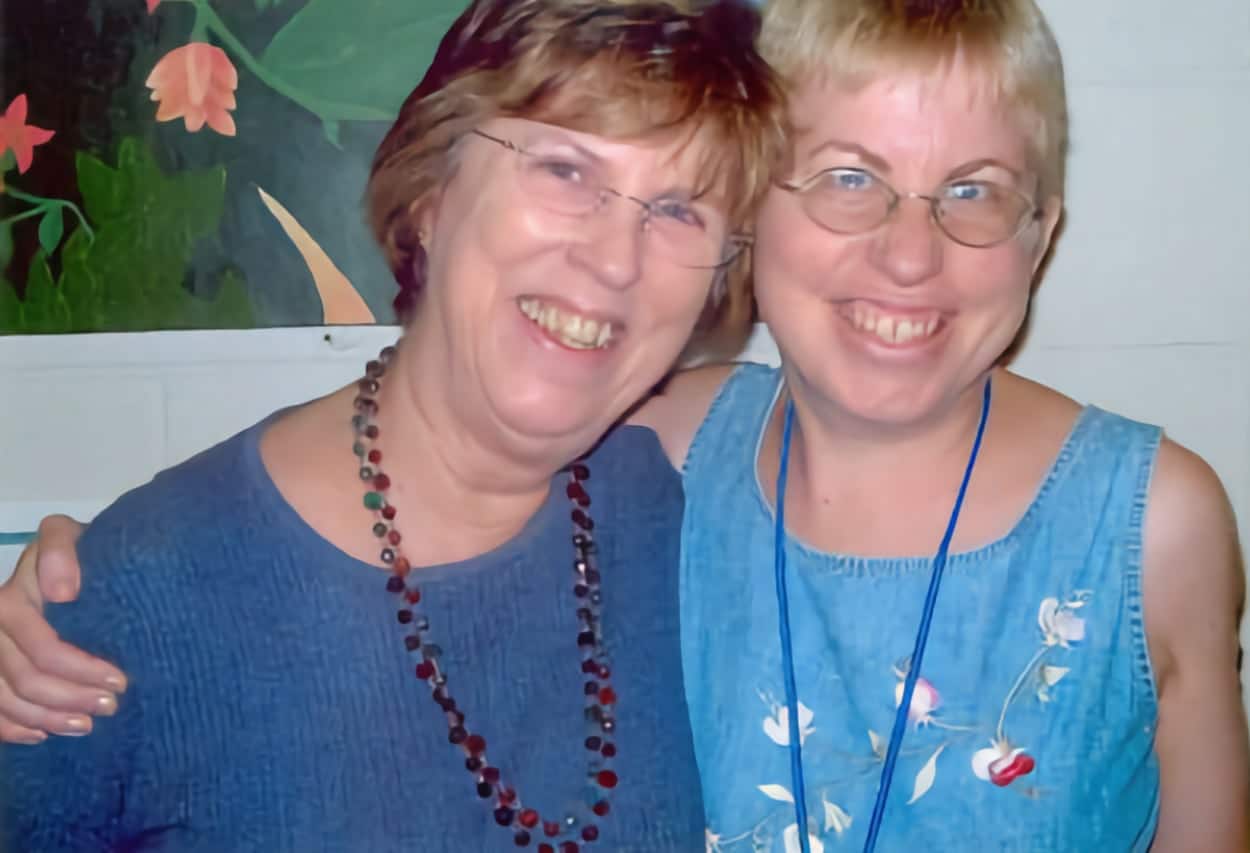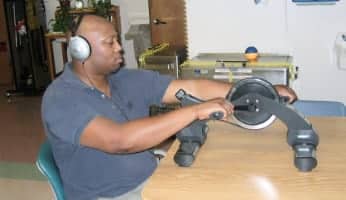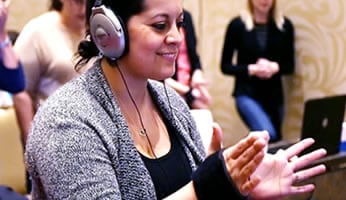Featured on Modern Mom: My Daughter with Autism’s Journey to Independence

Home - Testimonials - Adult Testimonials - Featured on Modern Mom: My Daughter with Autism’s Journey to Independence

My Daughter with Autism’s Journey to Independence
As a new mother, you have hopes and dreams for your child. You hope your child will be delivered with ten fingers and ten toes. You hope your child will cry, giggle and burp. You hope he or she will crawl, walk and eventually run. You even dream your child will grow up to be happy, healthy and successful.
But as we know for some mothers, our biggest fear is that all that our child will ever be is just a hope and a dream.
Ten fingers, ten toes, one diagnosis: autism
Within one month of Robin’s birth we knew something was not right. In 1971, my husband and I rejected institutional placement for our infant daughter who was recently diagnosed as severely disabled and later with classic (severe) autism. The doctor said to us, “…as long as she’s progressing, be thankful…any progress she might make in childhood will regress as an adult.” Scared and in disbelief, we chose not to accept his negative diagnosis – we chose not to believe the limited potential of our daughter.
At the earliest stages of Robin’s autism, my husband and I overcame our first challenge – we just wanted to stop the wild screaming, rocking and self-injurious behaviors. We did not know if she could develop beyond what we saw at infancy. Determined, we made a commitment, as long as she’s progressing, regardless how slow, we’d keep pushing her forward. Thus, as parents we developed new hopes and dreams for our daughter – that eventually lead her to independency.
One diagnosis, multiple treatments: one step at a time
Autism isn’t easy. Robin required our personal commitment, including time and money. As parents, we educated ourselves and became her case managers. I became Robin’s special education teacher, psychologist, dietitian, and her speech, occupational and behavior therapists’ assistant. I reinforced everything I could in the home environment. Everything Robin learned had to be tailored to her unique learning style – every time. She did not need just one thing or one therapy to reach her unknown future. Robin needed them all, and she needed them all in a coordinated, structured and consistent manner.
As months turned into years, she slowly progressed with our collected efforts and graduated from her local high school with a ‘certificate of attendance.’ Robin’s visual, language, intellectual and behavioral issues were still very fragile; however, we had worked very hard and we felt very successful. At the time we truly believed this was Robin’s potential.
One step forward, two steps back
 But once in adulthood and out of the school environment, Robin was angry most of the time. She was slamming doors for communication, seeking isolation in her bedroom, and very unpredictable. I decided Robin’s routine was the problem, not regression, and I thought we needed to find her a job. I took her for a vocational evaluation with our state. She was deemed unemployable and they recommended an adult day training program.
But once in adulthood and out of the school environment, Robin was angry most of the time. She was slamming doors for communication, seeking isolation in her bedroom, and very unpredictable. I decided Robin’s routine was the problem, not regression, and I thought we needed to find her a job. I took her for a vocational evaluation with our state. She was deemed unemployable and they recommended an adult day training program.
Over the next ten years, Robin’s therapists recommended various therapies and diets that work together to help her lead a more independent life, including the Gluten-Free Casein-Free (GFCF) diet and vitamins and supplements to enhance her therapies. In speech therapy, her speech pathologist recommended Interactive Metronome Therapy (IM), a clinically-proven therapy that helped realign the timing in Robin’s brain using auditory guidance.
As Robin began using the therapy, her speech blossomed to the normal processing speed of her peers, thus she experienced real communication for the very first time! When using the IM therapy with children with autism, ADD and ADHD there are significant improvements in attention, motor control and function, processing speed, as well as a decrease in impulsive behavior. For Robin, she no longer exhibited repetitive behaviors, and her reaction time in non-verbal situations was within the normal range. With this success, Robin’s therapist added Relationship Development Intervention (RDI), a therapy that modifies behavior by helping improve social skills, adaptability and self-awareness.
A hope, a dream, and now a reality
It’s 2012, and our forty-one year old daughter, Robin, has been employed for sixteen years. She is a cashier at our local Publix Supermarket (working 33 hours a week) and even has a second job at our local YMCA as a membership receptionist.

Robin has lived independently in her own condo for ten years, belongs to an active social group and has had a boyfriend for over three years. She keeps a very busy schedule these days and she likes it that way, including three hours a week of speech therapy, where she continues using IM for stability.
She is very proud of herself and her lifestyle accomplishments. She calls or checks on us daily, typical of a normal child with older parents!
It took nearly forty years for Robin to meet her potential. Autism is not a one-size-fits-all disability and the right combination of therapies and continued quality support from parents and loved ones is needed for an autistic child to succeed at any age. The new and innovative therapies available today, like Interactive Metronome (IM) and Relationship Development Intervention (RDI) make it possible for families to empower themselves and help their children. Ultimately, their hopes and dreams, like ours, will become a reality – for those children like Robin.
Ann Millan is the author of Autism: Believe in the Future, from Infancy to Independence. She has been a disability advocate for forty years, working with parents and professionals on the federal, state, and local level. Ann knows firsthand the importance of self-confidence and determination to make the right decisions for your child. She lives with her husband, Bob, in Florida. They have three girls; the third has autism. (www.autism-believe-future.com).
Read it at the source: ModernMom





